Recommendation. When removing and installing cooling system hoses, it is recommended to replace standard band clamps with worm-drive clamps marked 25-40. These clamps are more convenient during installation and more reliably seal connections.
Level check
The fluid level in the expansion tank should be 3-4 mm above the mark "MIN", made on the translucent body of the tank.
1. For the convenience of controlling the liquid level, unfasten the rubber belt while holding the tank with your hand.
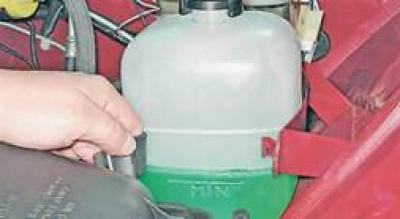
Attention! Unscrew the plug of the expansion tank only on a cold engine, since excess pressure is created inside the tank on a warm engine.
2. If necessary, open the tank cap and add coolant to it (see "Operating fluids") to the required level.
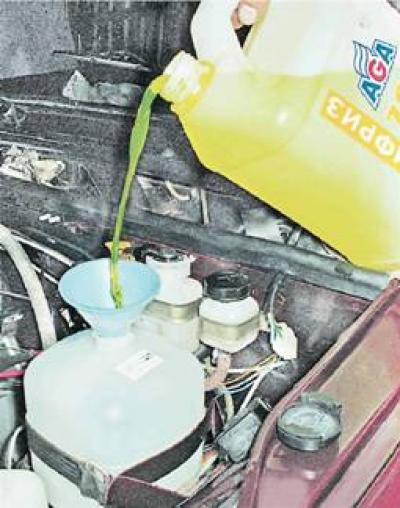
Attention! Coolant is poisonous, be careful. If it comes into contact with the paintwork, the liquid may cause a change in its color, so immediately remove the liquid with a rag.
Do not use water as a coolant, it does not contain corrosion inhibitors, poorly lubricates the pump seals and freezes at low temperatures.
Coolant replacement
We replace the coolant according to the frequency of maintenance (see "Periodic maintenance"), as well as in case of a change in its color (this is a sign of fluid aging). We change the fluid only on a cold engine!
1. We install the car on a viewing hole or overpass (see "Vehicle preparation for maintenance and repair").
2. Move the interior heater control lever to the extreme right position (fully open the heater valve).
3. We turn away and remove the plugs of the radiator and expansion tank.
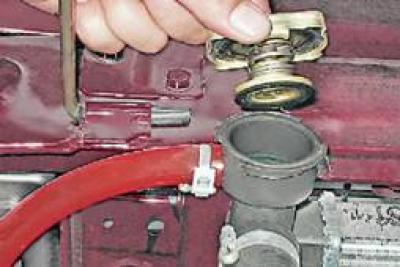
4. Remove the engine splash guard (see "Mudguard - removal and installation").
5. We substitute the container (at least 10 l) under the drain plug in the cylinder block.
6. Using a 13 mm socket wrench with an extension, unscrew the drain plug.
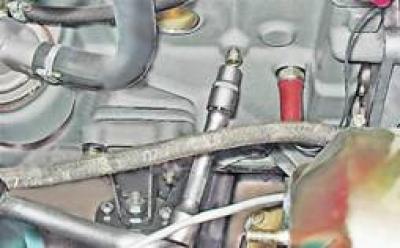
7. Drain the coolant from the cylinder block.
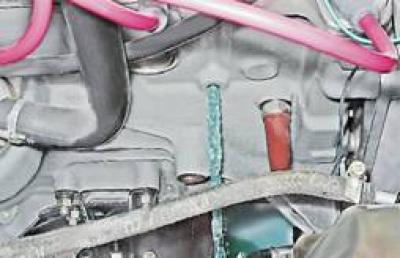
8. We substitute the same container under the radiator drain hole and unscrew the plug.
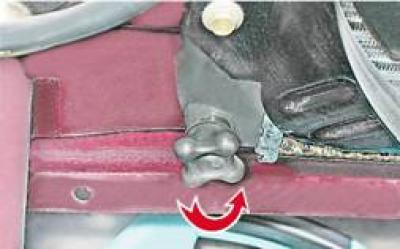
9. Drain the coolant from the radiator.
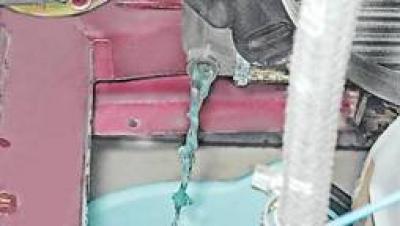
10. Having unfastened the expansion tank fastening belt and lifting it, drain the liquid from the tank through the radiator.
11. Install the tank in place and secure it with a belt.
12. Wrap the drain plugs on the radiator and cylinder block.
Note: In order to avoid air pockets, it is recommended to remove the rubber hose from the inlet pipe heating unit (throttle body on injection engine).
When filling the system at the moment the liquid leaves the hose, we put it on the pipe.
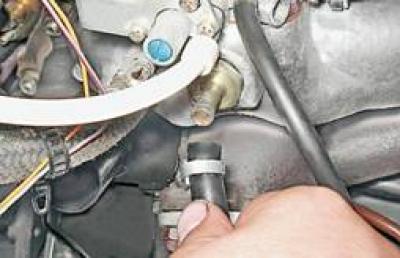
12. We fill the engine cooling system through the radiator neck until the liquid level reaches the lower edge of the neck.
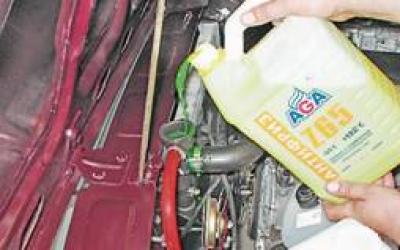
13. In the process of filling the system with liquid (to reduce the chance of air pockets) crimp the radiator hoses by hand. Close the radiator cap.
14. Pour coolant into the expansion tank to a level 3-4 mm above the mark "MIN" on the wall of the tank and close the cork.
15. We start the engine and let it idle for 3-5 minutes to remove air pockets, then stop the engine and add coolant to the radiator and reservoir to the required level.
